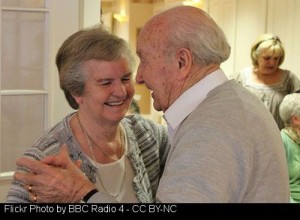 (NAPSI)—The statistics on Alzheimer’s disease bear witnessing. The prevalence of the condition is estimated to triple by 2050, growing from 5.3 million today to 16 million. It is the sixth leading cause of death in the United States and the fifth leading cause of death for those aged 65 and older.
(NAPSI)—The statistics on Alzheimer’s disease bear witnessing. The prevalence of the condition is estimated to triple by 2050, growing from 5.3 million today to 16 million. It is the sixth leading cause of death in the United States and the fifth leading cause of death for those aged 65 and older.
And costs for the disease are taking a toll: In 2015, caring for those with Alzheimer’s was estimated to be $226 billion, with half of the costs borne by Medicare, according to the Alzheimer’s Association. By 2050, the cost of Alzheimer’s could jump to $1.1 trillion (in 2015 dollars).
That makes Alzheimer’s disease ripe for breakthroughs in prevention and curative treatments. The Alzheimer’s Association says that new treatments for the disease cannot be discovered without clinical trials, which are seeking tens of thousands of volunteers, both with and without the disease.
Getting On Board With A Registry
One of the easiest ways to participate in a clinical trial for Alzheimer’s disease is through a health care registry, which matches individuals to clinical trials. The Internet-based, free national Brain Health Registry launched in 2014 is one such registry. With 40,000 current members, its goal is to double the number in 2016.
The Brain Health Registry aims to reduce the cost of patient recruitment for clinical trials by building a large online pool of potential candidates.
Once volunteers are registered on the site, they complete questionnaires about basic demographics, health, lifestyle and medical history, along with cognitive tests and a consent form on the Brain Health Registry website, www.join.brainhealthregistry.org.
The National Institute on Aging makes a strong case for participation in clinical trials:
- Help others, including future family members, who may be at risk for Alzheimer’s disease.
- Receive regular monitoring by medical professionals.
- Learn about Alzheimer’s and one’s health.
- Test new treatments that might work better than those currently available.
- Get information about support groups and resources.
The state of research for Alzheimer’s pales when compared to other diseases. In 2011, the National Institutes of Health (NIH) spent only $480 million on Alzheimer’s, while cancer research received about $6 billion, heart disease, $4.2 billion and HIV, $3.2 billion.
 Alzheimer’s Affects More Women, Minorities
Alzheimer’s Affects More Women, Minorities
Alzheimer’s disease affects a disproportionate number of women, African Americans and Hispanics, as well as older adults over 65. Two-thirds of the 5.1 million people currently suffering from Alzheimer’s disease are women.
Unfortunately, African Americans represented 12 percent of the U.S. population in 2011 but only 5 percent of clinical trials, and Hispanics comprised 16 percent of the population but only 1 percent of clinical trial participants.
A recent University of California at Davis study shows that despite a congressional mandate that research financed by NIH include minorities, nonwhites comprise fewer than 5 percent of participants in NIH-supported studies.
The FDA’s Office of Women’s Health identified major barriers to minorities: lack of disease education; insurance status; patient inconvenience costs; unavailability of transportation; distance to a study site; and patient and family concerns about risk.
You Can Help
To help increase participation in clinical trials and help speed the path to cures, people are encouraged to join the Brain Health Registry for free at www.join.brainhealthregistry.org.
Cynthia Lopinto
Latest posts by Cynthia Lopinto (see all)
- Honey Chocolate–Covered Pretzels - April 3, 2018
- True Colors - April 3, 2018
- Spring Cleaning…You’ve Gotta Be Kidding - April 2, 2018
- Should You Stay In Your Home Or Move During Retirement? - April 2, 2018
- Hawaiian Plants For Good Health - April 2, 2018
 Home Front Magazine A Publication for Seniors
Home Front Magazine A Publication for Seniors

